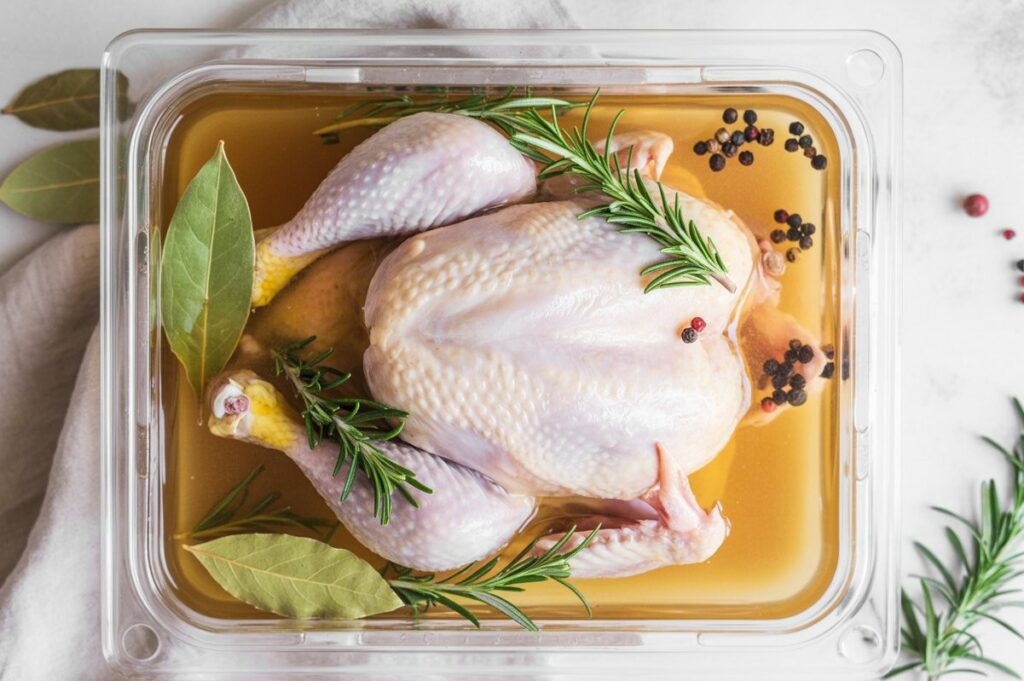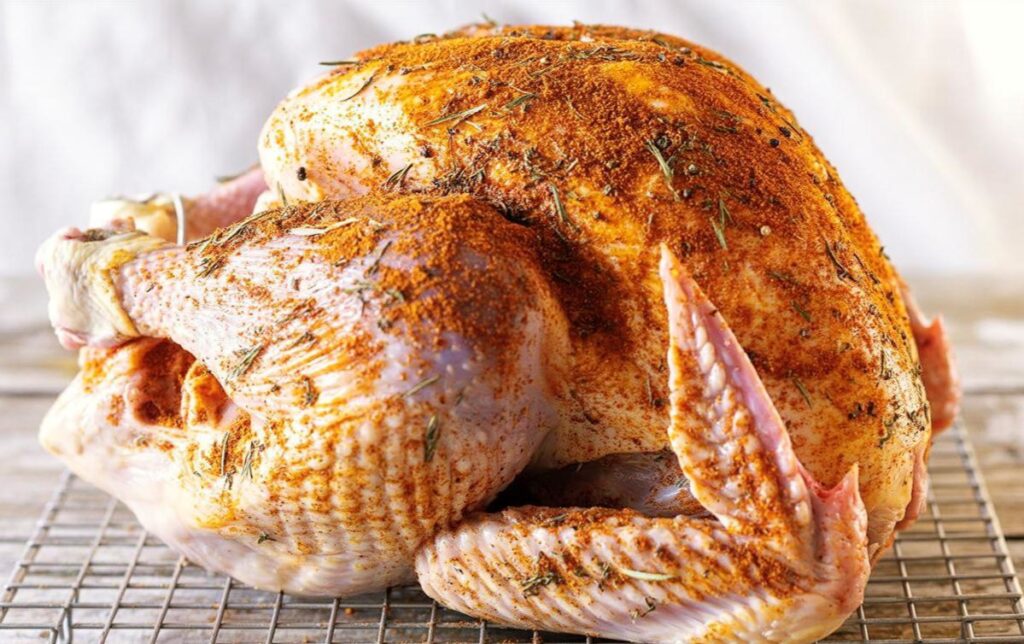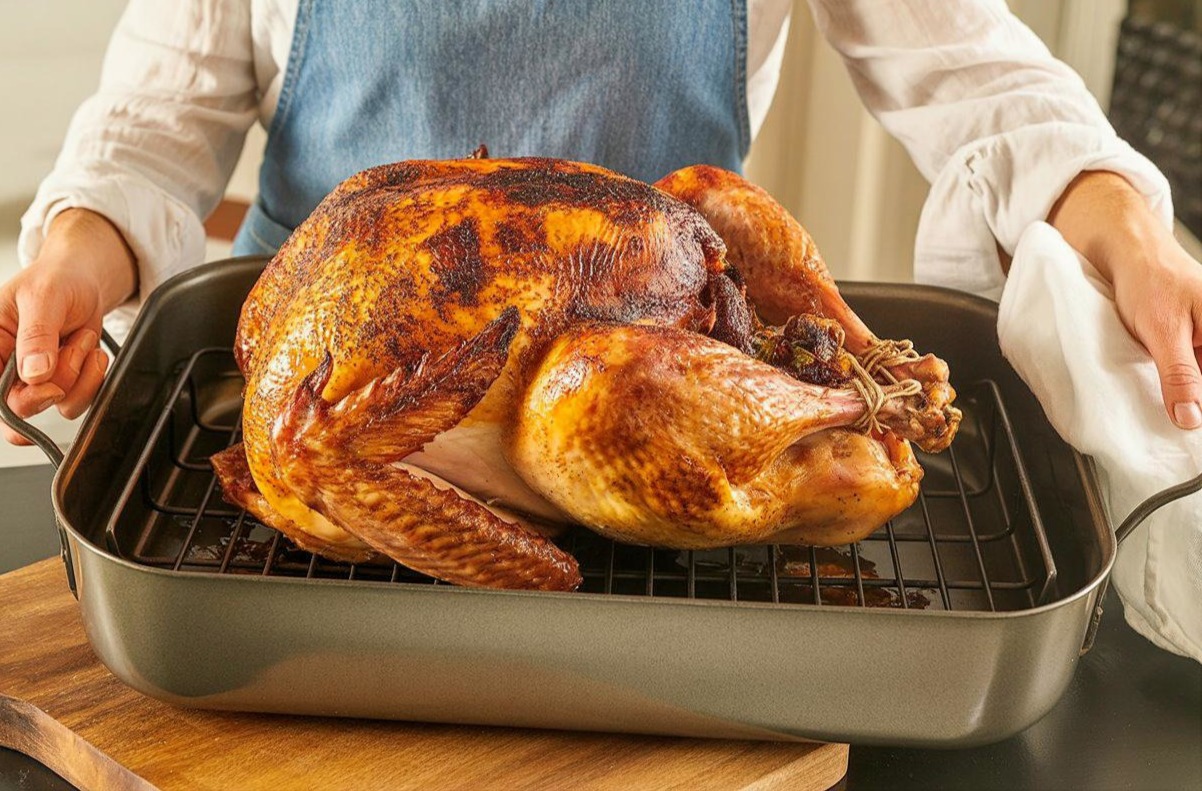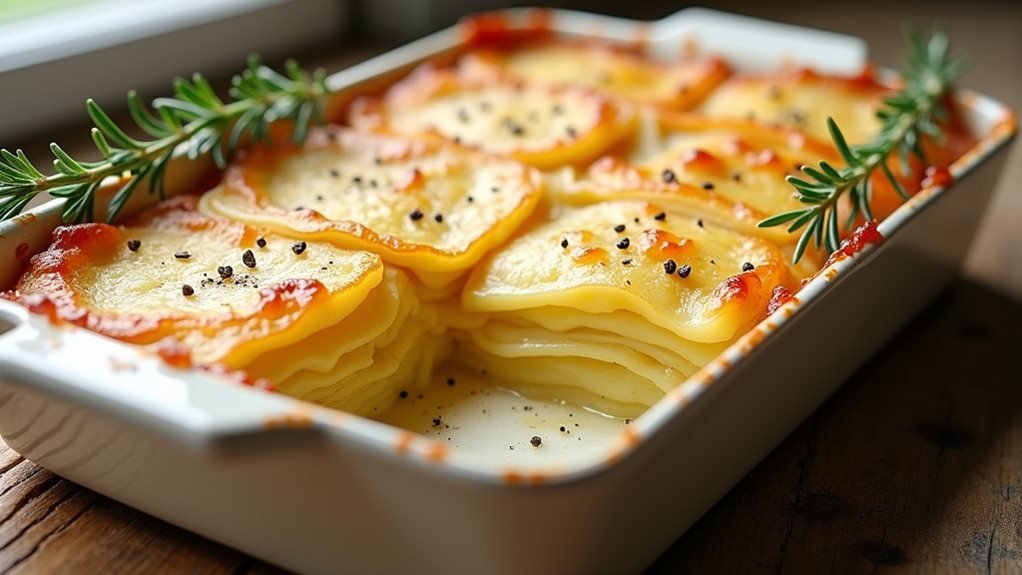Brining a turkey—whether with a dry brine or a wet brine—is one of the most reliable ways to guarantee moist, flavorful meat. In fact, brining works by altering the proteins inside the turkey through osmosis, allowing them to retain more moisture and seasoning. If you’re just getting started, this guide will show you step-by-step cooking techniques to master brining safely and effectively.
Why Brining Makes a Better Turkey
When salt interacts with turkey proteins, it loosens their structure so they can hold more water during roasting. This means less shrinkage, juicier meat, and deeper seasoning. A dry brine maximizes skin crispness, while a wet brine saturates the bird with moisture and subtle flavor from aromatics.
How to Brine a Turkey Step by Step (Dry & Wet)

Not sure where to start? Use these tested methods for reliable results.
- Choose your method: Dry brine (salt rub) or wet brine (saltwater soak).
- Measure salt correctly: 1 tablespoon kosher salt per 4 pounds of turkey for dry brine. For wet brine, 1 cup of kosher salt per gallon of water.
- Prepare the turkey: Thaw it completely, remove the giblets, and pat it dry.
- Apply brine:
- Dry Brine: Rub salt mixture over skin and inside cavity. Refrigerate uncovered 24–48 hours.
- Wet Brine: Dissolve salt in cold water, submerge turkey fully. Refrigerate 12–24 hours.
- After brining: Dry brine → do not rinse, just pat dry. Wet brine → rinse lightly under cool water, then pat dry.
- Cook safely: Roast until an instant-read thermometer shows 165°F in the thickest part of the breast.
Want a visual walk-through? Watch this YouTube video tutorial for a step-by-step guide on turkey brining.
Dry Brine vs Wet Brine: Which Is Better?
The right choice depends on your kitchen setup and flavor goals. Dry brine is less messy, saves refrigerator space, and creates crispier skin. Wet brine often produces juicier meat, but can make skin slightly soggy. Many cooks in Reddit’s cooking community debate this exact trade-off every year. Herbed Butter Boards To Impress Ramsay Thanksgiving Style
| Factor | Dry Brine | Wet Brine |
|---|---|---|
| Skin texture | Crispier | Less crisp |
| Moisture level | Juicy, well-seasoned | Very juicy |
| Space required | Minimal | Large container |
How Long to Brine a Turkey (By Weight)

The right brining time depends on bird size. Here’s a simple chart:
| Weight | Dry Brine | Wet Brine |
|---|---|---|
| 8–10 lbs | 18–24 hrs | 12 hrs |
| 10–14 lbs | 24–36 hrs | 18 hrs |
| 14–18 lbs | 36–48 hrs | 24 hrs |
| 18–22 lbs | 48 hrs | 36 hrs |
Do You Rinse the Turkey After Brining?
Dry brine: No rinsing needed — pat dry to maximize skin crispness. Wet brine: Rinse lightly under cool water, then dry thoroughly with paper towels. This prevents oversalting and ensures browning.
Common Brining Mistakes (and Fixes)
- Over-salted? Soak the turkey in fresh water for 30 minutes before roasting.
- Didn’t brine long enough? Add extra seasoning before roasting.
- Skin not crisping? Air-dry uncovered in fridge for 8–12 hours before cooking.
Flavor Boosts: Herbs, Spices & Liquids
Want to go beyond basic salt? Add aromatics such as bay leaves, garlic, rosemary, thyme, and citrus peel. For wet brines, replace part of the water with apple cider for subtle sweetness.
Food Safety Tips for Brining Turkey
Always keep your brine below 40°F. Use a food-safe container, store in the fridge, or keep a cooler packed with ice. Never reuse brine. For official guidance, see USDA compliance recommendations.
How We Tested This Brining Guide
John Siracusa tested both methods on 12-lb and 16-lb turkeys. Dry-brined birds were refrigerated uncovered for 36–48 hours. Wet-brined birds were submerged for 24 hours in salted water with herbs. All were roasted at 325°F until reaching 165°F internal temperature.
Notes included: – Dry brine yielded the crispiest skin. – Wet brine produced slightly juicier meat, especially in breast portions. – Salt measurement differences between Diamond Crystal and Morton kosher salt affected flavor intensity.









